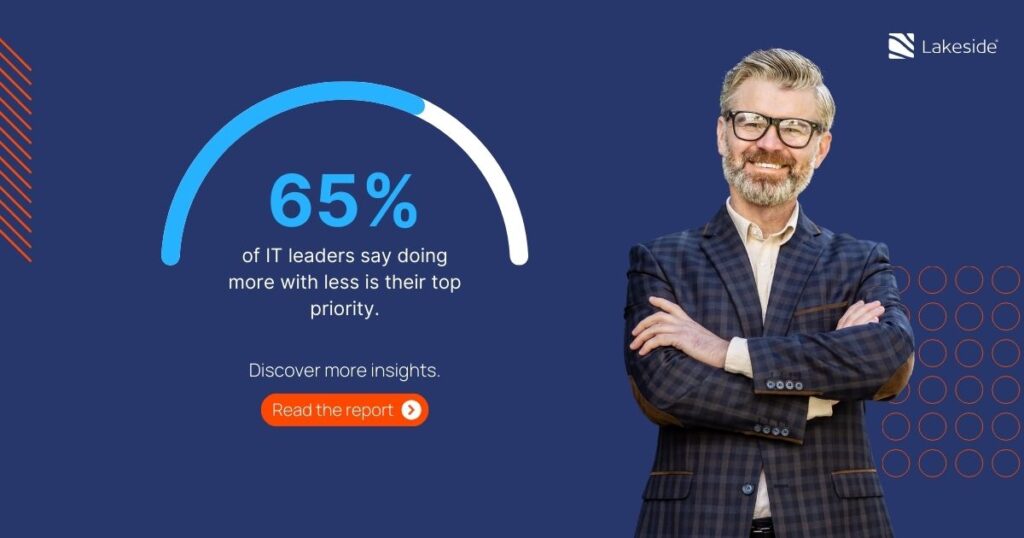“Shifting Left”: The Business Value of Moving IT Incident Resolution from L3 to L1 Technicians

In today’s IT landscape, efficiency and cost-effectiveness are on every IT leader’s mind. With increasing pressures to deliver more with fewer resources, IT departments need to streamline operations and improve service delivery. In fact, 65% of IT leaders surveyed earlier this year indicated they are prioritizing doing more with less as their top priority.
“Shifting left” — that is, moving incident resolution from higher-level support tiers such as Level 3 (L3) down to lower levels, ideally to Level 1 (L1) or even to self-service, aka Level 0 (L0) — is an effective way to do more with less. While the concept is familiar to many IT professionals, the true business value it offers, particularly when applied strategically, often remains under-explored. It is worth examining the practical benefits of shifting left and ways IT directors can adopt this approach to enhance their operations.
Understanding the “Shift Left” Strategy
“Shifting left” essentially involves empowering lower-tier support teams, like L1, to handle issues traditionally escalated to more specialized L3 or L2 teams who traditionally take on the more complex incident tickets. This shift is achieved by enhancing automation, optimizing knowledge management, and providing more advanced tools (such as AI purpose-built for IT) and training at the L1 level. The goal is to resolve issues faster, minimize escalations, and ultimately reduce both the cost and complexity of IT operations.
Practical Examples and Business Impact
One tangible example of shifting left is related to common issues encountered with collaboration software. For example, if an application’s cache becomes corrupted, end users will experience various performance issues. Previously, resolving this issue may have required intervention from an L2 engineer who would need to remotely access the user’s machine, clear the cache manually, and restart the application. With a well-designed automation, however, an L1 agent can now trigger the cache-clearing process remotely with a single click, without needing to log into the user’s device. The user is informed that the affected app will close temporarily, and within minutes the issue is resolved without needing higher-tier involvement. This “shifting left” approach saves time and reduces the burden on more skilled (and expensive) L2 resources.
Scaling this kind of shift across a large organization can deliver substantial cost savings. Let’s say, for instance, that an organization averages 2,000 L3 tickets per month and successfully shifts 5% of those to L1, the reduction in resolution costs is significant. With L3 resolutions typically costing upwards of $75 per incident, compared to around $25 for L1 tickets, even modest reductions can translate into tens of thousands of dollars in monthly savings at large enterprises.
Beyond L3 to L1: Expanding the Shift Left Approach
The shift left strategy is not limited to moving L2 tasks to L1. It also can apply across other levels:
- L3 to L2: For example, automating processes like re-enabling BitLocker, a task typically handled by L3 due to its complexity, can be shifted to L2 when automated. By integrating logging and safety checks, L2 agents can execute this task reliably without involving specialized L3 resources.
- L1 to Self-Service (L0): Routine tasks such password resets or Wi-Fi troubleshooting can be fully automated and handled through self-service portals. While these might seem simple, they account for a significant volume of IT tickets. Shifting these to Level 0 enhances efficiency and gives end users the tools to resolve issues themselves.
The Broader Business Value of “Shifting Left” in IT
For IT directors, the business value of shifting left extends beyond just cost savings. Here are some of those benefits:
- Increased Productivity: By resolving incidents at the lowest possible level, IT teams free up more skilled resources to focus on complex projects, innovation, and strategic initiatives. For the wider business, quicker resolutions mean less downtime for employees, leading to higher overall productivity.
- Improved End-User Experience: End users benefit from faster issue resolution and reduced disruption. For example, automating proactive system notifications that prompt users to restart their devices can prevent common performance issues, reducing the number of tickets raised in the first place.
- Scalability: As businesses grow, the volume of IT tickets tends to increase. “Shifting left” provides a scalable model, enabling IT departments to manage higher volumes without proportional increases in headcount. Automation and enhanced L1 capabilities allow organizations to handle growth more efficiently.
Overcoming Challenges and Customizing Solutions
One key challenge in “shifting left” is the variability of issues across different environments. It goes without saying that not all organizations experience the same IT problems, making it difficult to develop one-size-fits-all automations. Not to mention that IT environments are changing all the time based on software advancements and other variables. Therefore, the “shift left” strategy requires a tailored approach, where IT departments work closely with their end-user experience management (see “The Forrester Wave™: End-User Experience Management, Q3 2024”) or digital employee experience (DEX) vendor to identify and address the most common pain points in their environment.
Lakeside SysTrack Velocity Blueprints, for example, can play a crucial role here. By partnering with Lakeside, organizations can access blueprints designed for ticket reduction and even ticket avoidance through anomaly detection. These SysTrack blueprints guide IT teams on how to best automate and shift tasks left, ensuring maximum impact.
Taking a Strategic Approach to “Shifting Left”
The “shift left” strategy is more than just a buzzword; it’s a tangible approach that delivers real business value. For IT directors, the key to success lies in strategically identifying opportunities where automation and upskilling can reduce reliance on higher-tier support. By focusing on practical use cases and collaborating with partners like Lakeside Software to develop tailored solutions using our AI-powered DEX platform, SysTrack, organizations can drive cost savings, improve productivity, and create a more agile IT environment. In a world where IT resilience and efficiency are critical, shifting left is a strategy that no forward-thinking IT leader can afford to ignore.

Subscribe to the Lakeside Newsletter
Receive platform tips, release updates, news and more


